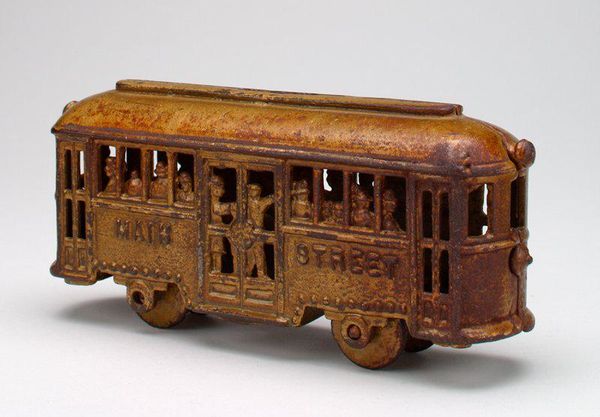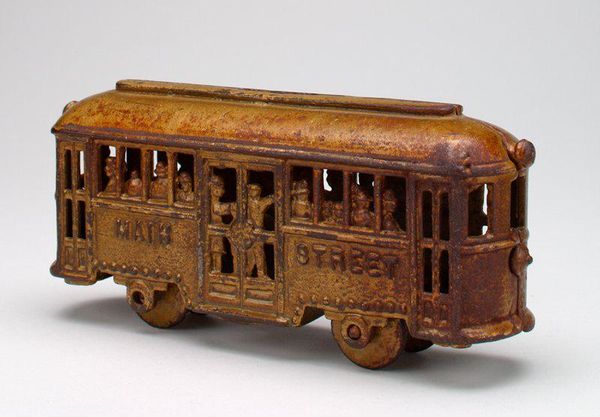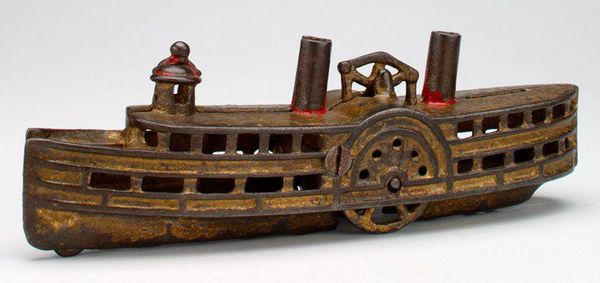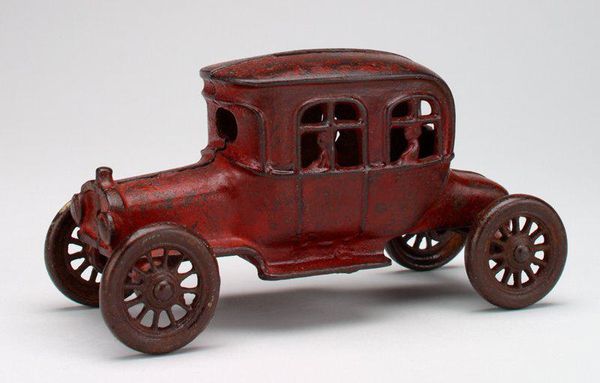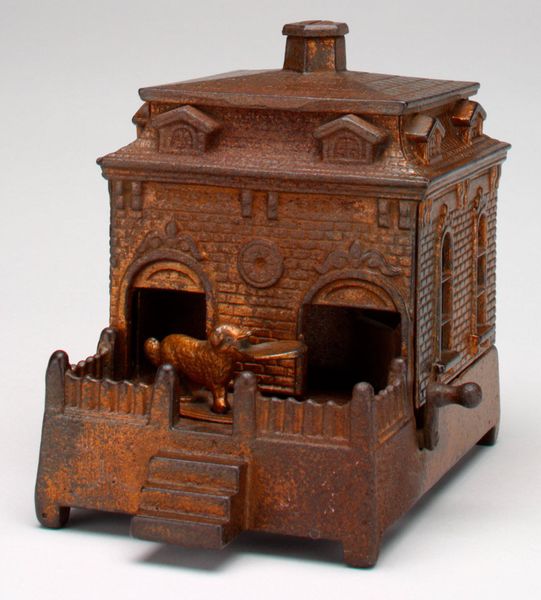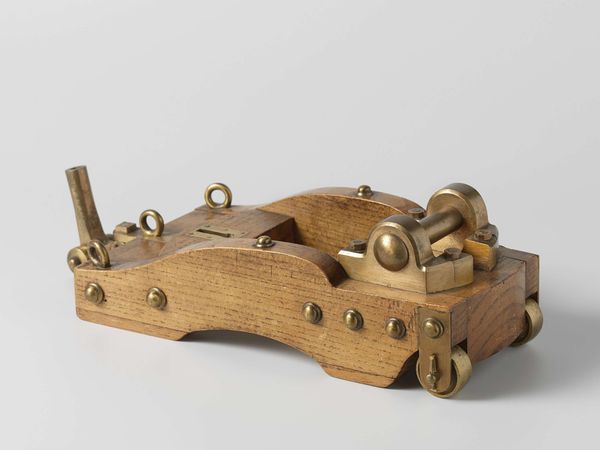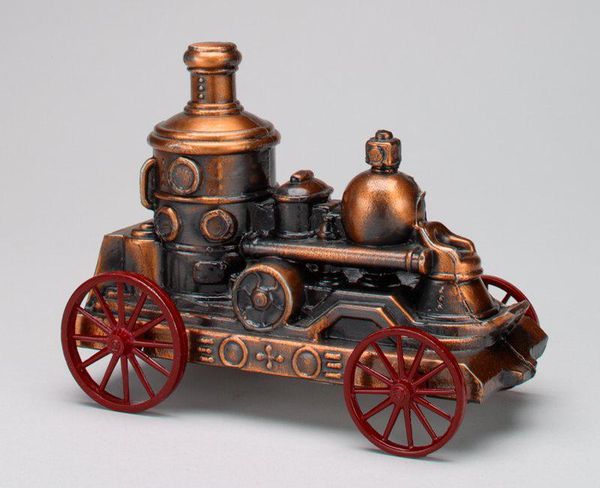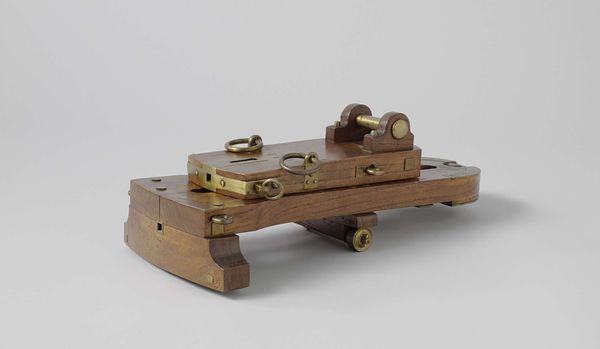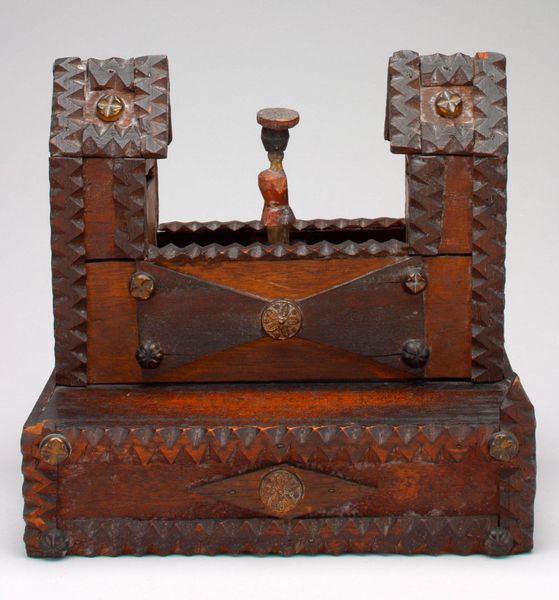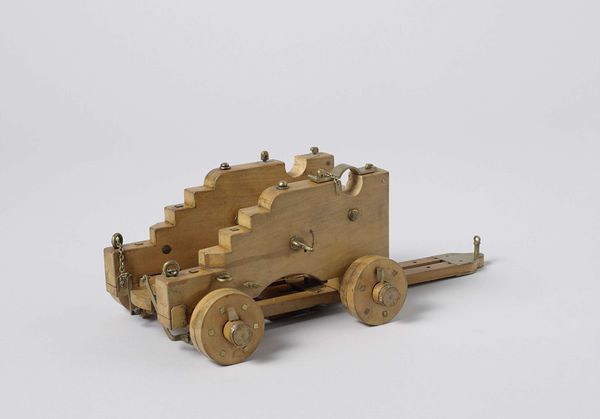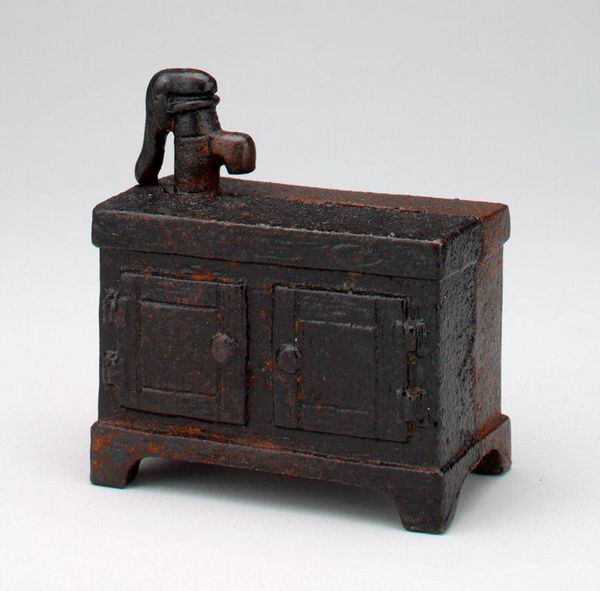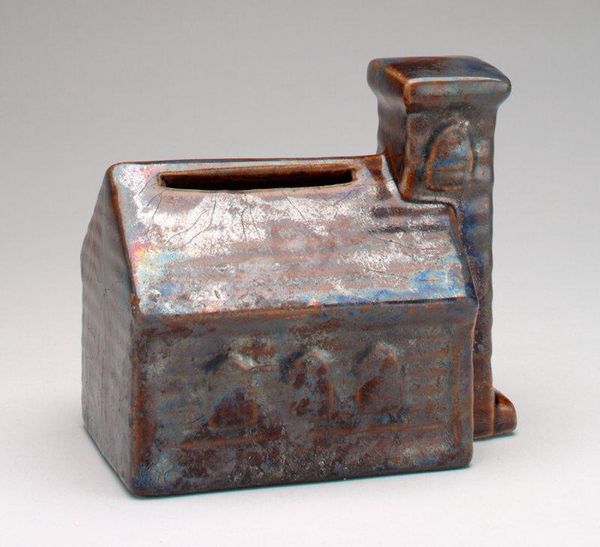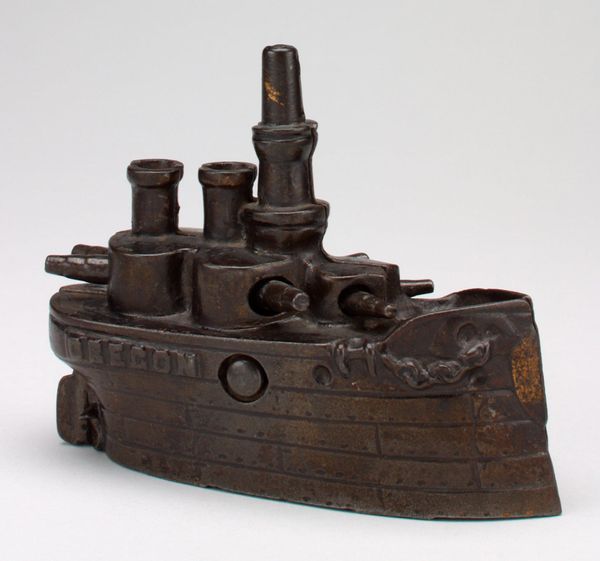
-Streetcar- still bank 1891
0:00
0:00
pigment, metal, sculpture
#
3d sculpting
#
pigment
#
3d printed part
#
metal
#
sculpture
#
sculptural image
#
figuration
#
unrealistic statue
#
3d shape
#
stoneware
#
sculpting
#
framed image
#
sculpture
#
statue
Dimensions: 2 7/8 x 4 1/2 x 1 1/8 in. (6.67 x 11.27 x 1.43 cm) (side 1)1 11/16 x 1 1/2 x 1 11/16 in. (4.29 x 3.81 x 4.29 cm) (wheel sets)2 9/16 x 1/8 in. (6.51 x 0.32 cm) (screw)
Copyright: Public Domain
Curator: Well, this little guy packs a punch of nostalgia. What are your initial thoughts? Editor: Immediately, I'm seeing industrialization, a touch of childhood whimsy, and a big question mark around accessibility. It's a dense, brown little world, isn’t it? Curator: Absolutely! We’re looking at a cast iron still bank, shaped like a streetcar. Made by the Columbia Grey Iron Company around 1891. It’s housed right here at the Minneapolis Institute of Art. There is something so innocent, yet also quite sturdy. Like a tiny fortress of finance! Editor: And who exactly was being encouraged to fill up this 'fortress'? Who had the spare change to drop into a novelty bank, and who was systemically denied those opportunities? These kinds of objects often reveal societal inequalities masked by cuteness. Curator: That's such a critical point. On one level, you can imagine a child delighting in saving their pennies, dreaming of future rides on a streetcar. But simultaneously, there's an undeniable connection to economic disparities of the late 19th century and who had access to capital. Editor: Precisely. Streetcars themselves were symbols of urban progress, but that progress wasn't shared equally. Segregation on public transport, unequal job opportunities – this little bank inadvertently reflects all of that. Curator: I think you're spot-on. And the materiality reinforces this too. It's not some lightweight trinket, it is HEAVY. Solid metal, you know. Very permanent-feeling object. It communicates durability. Editor: The weight of industry, the weight of history, the weight of unfulfilled promises... It is all encapsulated in a kid's bank. The patina alone tells a story! Curator: Indeed. So, we started with what appeared to be a quaint, vintage artifact and have uncovered multiple layers of social and economic implications. Isn't it marvelous how an object, however small, can offer such insights? Editor: That is the fascinating paradox of studying artifacts like these, isn't it? Their simplicity is deceiving, their potential to spark conversation, hopefully leading to actionable social transformation.
Comments
No comments
Be the first to comment and join the conversation on the ultimate creative platform.
